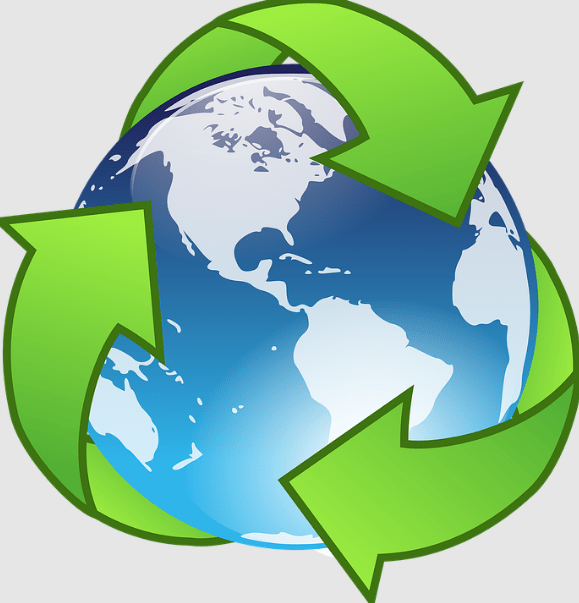Living a waste-free lifestyle may take a bit getting accustomed to, as the modern lifestyle demands us to focus our attention on consuming for the sake of consuming. However, a zero=waste lifestyle doesn’t mean you have to do away with life’s luxuries; it only means investing more consciousness into your consumer choices. Additionally, you’re more likely to save money by reducing your ecological footprint and do our planet a favor by diminishing the amount of waste slated for landfills.
The 5 R’s of a Zero Waste Lifestyle
The following are the five simple zero waste rules to achieve a waste-free lifestyle:
Refuse (what you don’t need)
Reduce (what you need)
Reuse (repurpose or use reusable objects)
Recycle (what you can’t refuse, reduce, or reuse)
Rot (compost the rest)
It’s one thing to read and understand these rules and another to put them into practice. You can start small and then proceed from there.
The 5 Most Effective Changes
There isn’t a perfect zero waste lifestyle. However, you can start by doing a couple of stuff and then gradually do more. The following tips can significantly reduce the quantity of waste sent to landfills:
1.Start composting
Composting might be the fastest method of reducing the waste you send to landfills. As soon as you start composting, the need to put out trash reduces— from once a week to once every few months. Also, much of our waste is organic matter which is valuable for soil enrichment.
2. Collect challenging to recycle but still recyclable stuff
Recycling waste is the last resort, but sometimes, recycling can be the only option. Before you throw anything uncommon in the trash, do a little research first, such as understanding the different plastic types typically found in consumer goods to see what can or can’t be recycled. Also, look for any assigned drop-off areas such as municipal recycling facilities or dispose of your waste through Terracycle, which recycles various things.
Examples of these items include batteries, electric toothbrush heads, polystyrene, batteries, toothpaste tubes, etc.
3. Always carry around a reusable water container and coffee tumbler
You can save an average of 156 bottles per year by using a reusable, eco-friendly container.
4. Bring reusable shopping bags and avoid using produce bags
Doing this will help in eliminating plastic shopping bags which are significant sources of waste. Also, instead of a produce bag, you can wash your fresh food well when buying from the store.
5. Strive for waste-free beauty items and personal care products
Aside from food and drinks, these products also contribute to the growing amount of waste, so finding waste-free alternatives will make a big difference.
Refuse
We mostly live off of everything plastic. So it’s highly noticeable that everything around us is made of, covered in, or single-use plastic. Therefore, the most straightforward change to make to achieve a zero-waste lifestyle is by refusing the following items:
Outside Waste
Plastic grocery bags
Plastic straws and cutlery
Takeaway coffee cups and plastic water bottles
Kitchen Waste
Saran/cling wrap
Coffee and tea packages
Sandwich bags
Paper towels and napkins
Plastic food containers
Disposable pan liners and cookware
Garbage can liners
Non-sustainable suds and scrubbers
Bathroom Waste
Deodorant
Virgin pulp toilet paper
Plastic razors
Soaps in plastic packaging
Floss, plastic toothbrushes, and toothpaste paste tubes
Period pads and tampons
Nylon toilet brushes
Beauty and skincare products in plastic packaging
Pet Waste
Dog poo bags
Non-biodegradable pet toys
Nylon and polyester leashes, harnesses, and pet collars
Plastic wrapped dog food and treats
Office Waste
Books, newspapers, and magazines
Non-rechargeable batteries
Junk mail and paper mailers
Unnecessary printing
Cheap promotional items
Reduce
For things that you can’t wholly refuse, consider reducing how much you buy or the amount of waste they produce. Begin by cutting back on:
Eating out
Food in packaging
How much you buy
Physical gifts
Buying new clothes
Technology upgrades
Laundry washes
Reliance on vehicles
Air travel
Reuse
A fantastic way to reduce waste is by reusing. Here are the following things you can reuse to minimize waste and save money:
Food waste
Old Tupperware
Jars
Old pet toys
Worn out towels/clothes
Recycle
Check if you can recycle the item before you throw it in the trash as several of them can surprisingly be recycled at special facilities. Also, it helps if you know the correct recycling procedures. If your council or municipality provides you with recycling guidelines, stick to them.
Terracycle is another excellent option and operates in different parts of the world, including the USA, Australia, and the UK.
Rot
A large amount of organic, compostable waste can amount to as much as 50% of waste. You can collect your food waste by placing a collection bin by your kitchen counter to help you collect food for your composter. Additionally, you can use your rot to grow your tiny apartment garden since it’s excellent for soil amendment and provides plants with nutrients.
If you don’t know how to compost, you can give your compostable waste to someone who does.

